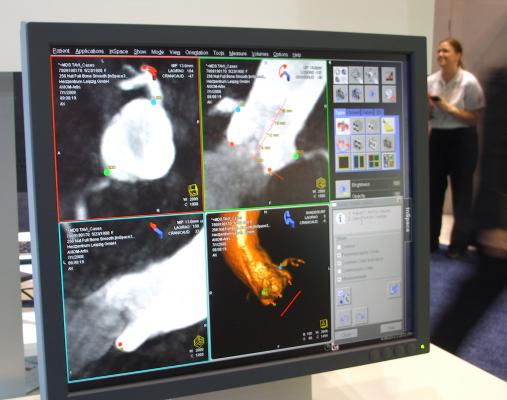
March 10, 2015 — In an analysis of outcomes of about 12,000 patients who underwent transcatheter aortic valve replacement (TAVR), death rate after one year was nearly one in four, according to a study in the March 10 issue of JAMA. Of those alive at 12 months, almost half had not been rehospitalized and approximately 25 percent had only one hospitalization.
Following U.S. Food and Drug Administration (FDA) approval in 2011, TAVR has been used with increasing frequency for the treatment of severe aortic stenosis in patients who have high risks with conventional surgical AVR. TAVR, a less invasive procedure than open heart-valve surgery, involves replacing the aortic valve using a catheter inserted in the patient’s groin. Introducing new medical devices into routine practice raises concerns because patients and outcomes may differ from those in clinical trials, according to background information in the article.
David R. Holmes Jr., M.D., of Mayo Clinic, Rochester, Minn., and colleagues examined one-year outcomes for TAVR patients who had 30-day outcomes previously reported. Data from the Society of Thoracic Surgeons/American College of Cardiology Transcatheter Valve Therapies Registry were linked with patient-specific Centers for Medicare & Medicaid Services (CMS) administrative claims data. The authors identified 12,182 patients with linked CMS data that underwent TAVR procedures at 299 U.S. hospitals from November 2011 through June 2013; the end of the follow-up period was June 30, 2014.
The median age of patients was 84 years and 52 percent were women. Following the TAVR procedure, 60 percent were discharged to home and the 30-day mortality rate was 7.0 percent. By 1 year, the overall mortality rate was 24 percent, the stroke rate was 4.1 percent, and the rate of the composite outcome of mortality and stroke was 26 percent. In addition, 47 percent of patients who remained alive at 12 months had not been rehospitalized, 24 percent were rehospitalized once and 12.5 percent were rehospitalized twice. Readmission for a composite of stroke, heart failure or repeat aortic valve intervention occurred in 19 percent of patients.
Characteristics significantly associated with one-year mortality included advanced age, male sex, end-stage renal disease and severe chronic obstructive pulmonary disease. Compared with men, women had a higher risk of stroke.
The authors note that the rate of one-year mortality reported with this registry is similar to that in other comprehensive reports. “Although this study includes only patients considered to have high risks with AVR, the majority of this mortality does not represent periprocedural complications, as 30-day mortality was only 7.0 percent. As such, this makes it imperative to focus on better prediction of the overall risks and benefits of the procedure, particularly given the existing comorbidities of the group of patients being considered for TAVR.”
They add that it may be possible to identify patients who may not benefit from this procedure and who should be counseled accordingly.
“Although three randomized trials and multiple single-center and multicenter registry studies have been published, the profile and longer-term outcomes of U.S. TAVR cases in routine clinical practice remains limited,” the researchers write. “These findings should be helpful in discussions with patients undergoing TAVR.”
For more information: www.jamanetwork.com


 April 16, 2024
April 16, 2024 








